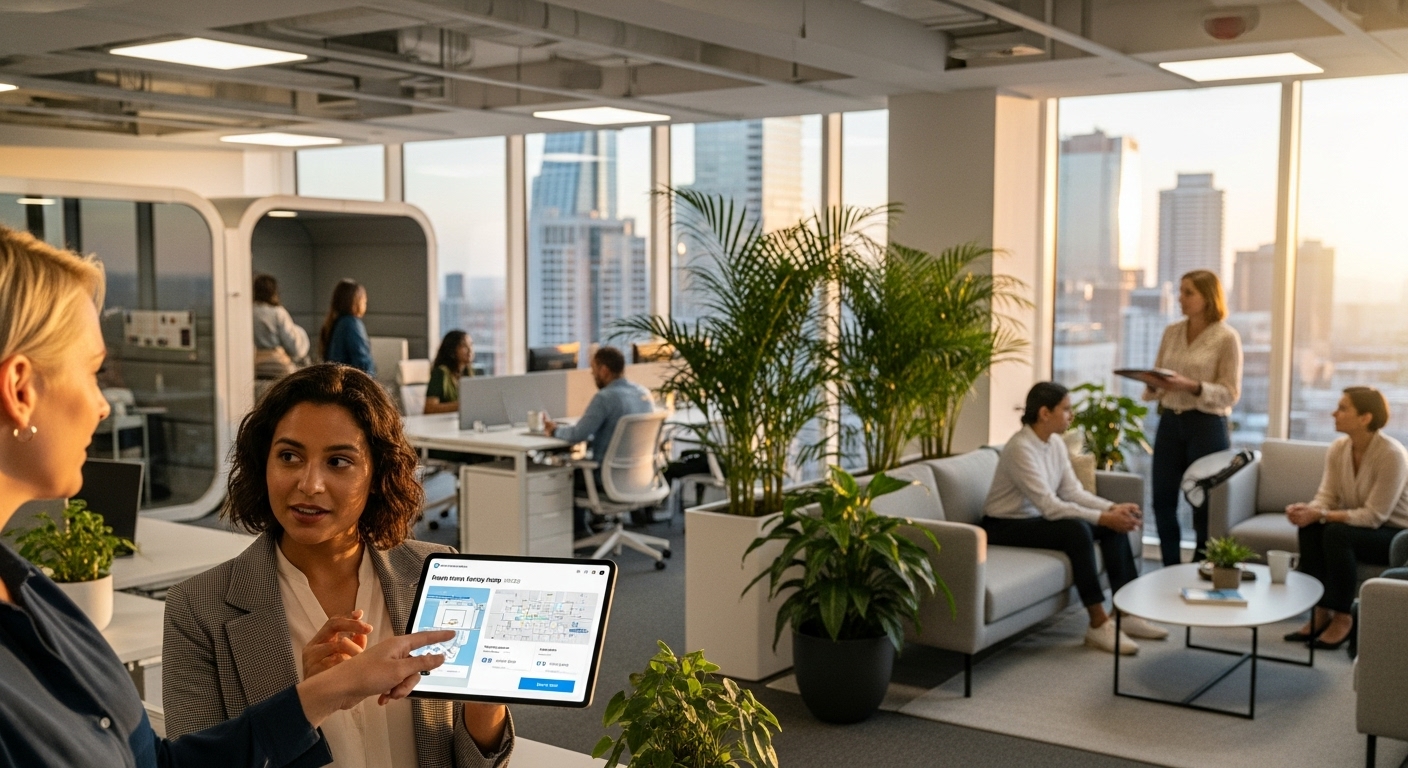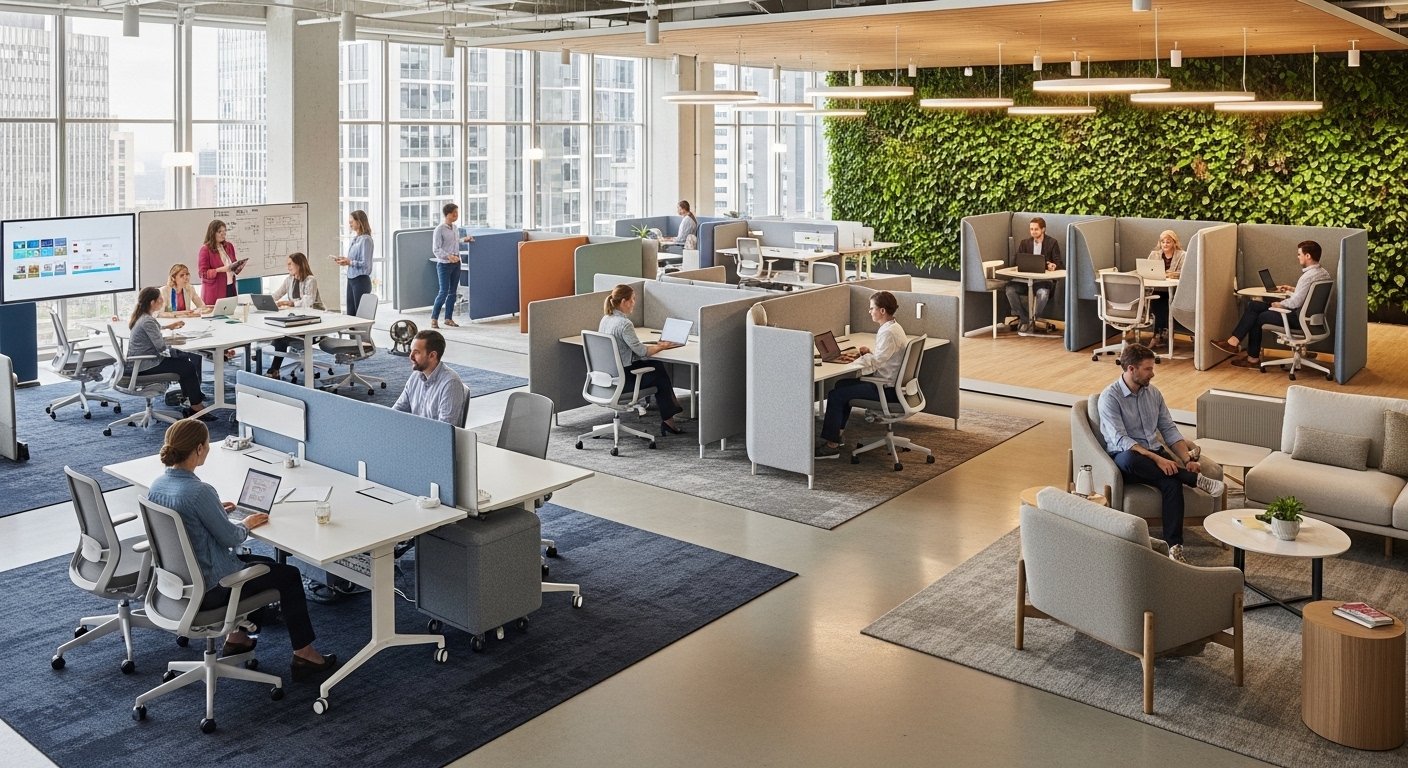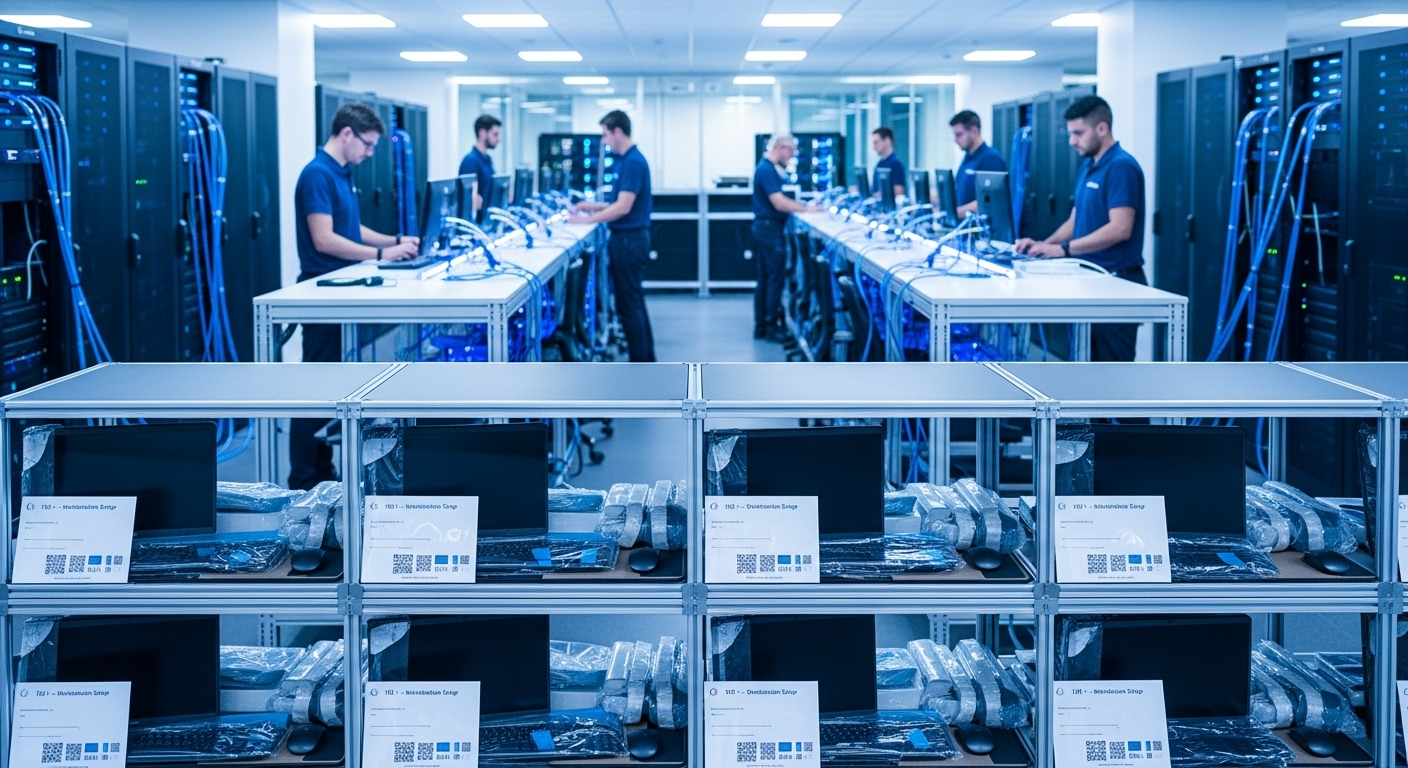In today’s fiercely competitive landscape, the war for talent is no longer won with salary and traditional benefits alone. A fundamental shift has occurred, placing the workplace itself at the heart of talent acquisition and retention strategies. The modern employee seeks more than just a desk; they desire an experience—a flexible, technologically advanced, and supportive environment that enhances their work and well-being. This is where innovative commercial real estate, powered by sophisticated digital platforms, emerges as a critical competitive advantage. Companies are now realizing that their physical space is a tangible representation of their culture and values. This article will explore how a strategic approach to workplace design and technology can transform a simple office into a talent magnet, attracting top performers and fostering the loyalty needed to keep them for the long term.
Redefining the office as a destination, not a mandate
The rise of hybrid and remote work has permanently altered the purpose of the corporate office. It is no longer a place of obligation but must earn its place as a destination for collaboration, innovation, and connection. To be ‘commute-worthy,’ a workspace must offer something employees cannot get at home. This means creating environments specifically designed for the types of work that benefit most from in-person interaction. This includes dynamic project rooms equipped with interactive digital whiteboards, comfortable social hubs that encourage spontaneous conversations, and high-tech presentation suites that make hybrid meetings seamless. Commercial real estate platforms are the backbone of this new model. They empower employees with the autonomy to choose how and where they work, offering tools for booking desks, reserving collaborative spaces, and coordinating schedules with teammates. This flexibility signals trust and respect for employees’ time and work styles, a powerful message that significantly boosts job satisfaction and retention. By transforming the office from a static container into a dynamic resource, companies can foster a vibrant culture that draws people in, rather than forcing them through the door.
The role of proptech platforms in enhancing employee experience
Property technology, or PropTech, is revolutionizing the relationship between employees and their physical workspace. Modern commercial real estate platforms are no longer just for facilities managers; they are employee-centric tools designed to create a frictionless and engaging daily experience. Imagine an employee arriving at the office and using a single mobile app to find a parking spot, gain building access via a digital key, book a focus pod for the morning, and order a coffee to be ready upon their arrival. This level of seamless integration removes daily administrative friction, allowing talent to focus on what they do best. These platforms also act as a central communication hub, providing updates on building events, wellness initiatives, and company news, thereby strengthening the sense of community. For talent acquisition, showcasing this tech-forward approach during the recruitment process can be a significant differentiator. It demonstrates that a company is invested in modern tools and, by extension, in its employees’ productivity and comfort. This digital layer on top of the physical space is no longer a luxury but a core component of a modern employee value proposition.
Designing for neurodiversity and well-being
A one-size-fits-all office design is an outdated concept that fails to support the diverse needs of a modern workforce. Innovative workplace strategy now heavily emphasizes designing for neurodiversity and holistic well-being. This means creating a rich ecosystem of spaces that cater to different tasks, moods, and personality types. Instead of endless rows of open-plan desks, a forward-thinking office offers a variety of zones: library-like quiet areas for deep concentration, acoustically sealed pods for private calls, open-plan lounges for casual brainstorming, and formal meeting rooms for structured collaboration. Beyond just layout, well-being is embedded in the building’s infrastructure. Features like biophilic design, which incorporates natural elements like plants and water features, have been shown to reduce stress and improve creativity. Advanced HVAC systems with real-time air quality monitoring and circadian lighting systems that mimic natural daylight patterns can boost health and energy levels.
As noted by Gensler Research Institute, “When employees have a great workplace experience, they are more likely to be engaged, have a positive view of their company, and have a strong desire to work for their company long-term.”
This focus on individual well-being is a powerful retention tool, showing employees that the company cares for them as people, not just as workers.
Leveraging data analytics for smarter workplace strategy
The most innovative companies are not just designing beautiful spaces; they are creating intelligent ones. Commercial real estate platforms integrated with IoT (Internet of Things) sensors provide a treasure trove of data on how workspaces are actually being used. By analyzing metrics from badge swipes, desk and room booking systems, and occupancy sensors, organizations can gain unprecedented insights into employee behavior and preferences. This data-driven approach allows for the continuous optimization of the workplace. For instance, analytics might reveal that small, four-person meeting rooms are constantly booked while large boardrooms sit empty, prompting a reconfiguration of the space to better meet demand. It might show that certain departments collaborate most frequently, informing where they should be seated to maximize synergy. This continuous improvement cycle ensures that real estate investments are directly aligned with employee needs, eliminating wasted space and resources. For talent, this translates into an environment that feels intuitive and responsive, one that evolves with them. It also sends a clear signal that the company is forward-thinking and committed to making intelligent, evidence-based decisions to support its workforce.
Amenitization as a strategic tool for talent acquisition
In the competition for top talent, amenities have become a critical part of the corporate arsenal. However, the focus has shifted from frivolous perks like ping-pong tables to amenities that provide genuine value and support work-life integration. These strategic amenities are designed to make employees’ lives easier, healthier, and more fulfilling. Examples include on-site fitness centers with group classes, access to mental health professionals, healthy and subsidized food options, and even on-site childcare services. Outdoor spaces, such as rooftop terraces or landscaped gardens, provide a place to decompress and connect with nature during the workday. Learning and development spaces, such as dedicated training rooms or libraries, show a commitment to employee growth. These are not just perks; they are powerful recruiting tools. During interviews, highlighting a suite of amenities that supports physical, mental, and professional well-being can be a deciding factor for a candidate choosing between multiple offers. It shows that the company understands the pressures of modern life and is actively investing in a supportive culture that helps its people thrive both in and out of the office.
Sustainability and corporate responsibility as a talent magnet
Today’s workforce, particularly younger generations, is increasingly driven by purpose and a desire to work for companies that align with their values. A demonstrable commitment to sustainability and corporate social responsibility (CSR) has become a non-negotiable factor for many high-caliber candidates. Commercial real estate plays a starring role in this narrative. Operating out of a LEED-certified or BREEAM-rated building sends a powerful message about a company’s commitment to environmental stewardship. These buildings are not only more energy-efficient, reducing the company’s carbon footprint, but they also provide healthier indoor environments for occupants. CRE platforms can further enhance this by providing real-time data on energy consumption, water usage, and waste recycling rates, making sustainability efforts transparent and engaging for employees. Companies can use this data to launch initiatives and challenges, fostering a shared sense of purpose. Highlighting these green credentials in job descriptions and during the recruitment process can attract talent who are passionate about making a positive impact, ensuring a better cultural fit and leading to higher long-term retention.
In conclusion, the line between human resources, technology, and real estate has effectively dissolved. The workplace is no longer a passive backdrop for work but an active participant in the employee lifecycle. To win the war for talent, organizations must view their real estate not as a fixed cost but as a dynamic, strategic asset. By leveraging integrated commercial real estate platforms, companies can create flexible, data-driven, and experience-rich environments that cater to the diverse needs of their workforce. The most successful businesses will be those that build commute-worthy destinations that foster collaboration, prioritize well-being, and reflect a strong commitment to sustainability. This holistic approach—marrying the physical space with digital tools and a people-first philosophy—is the definitive formula for transforming an office into a powerful magnet for acquiring and retaining the very best talent. The future of work is here, and it is being built on a foundation of intelligent, innovative real estate.





